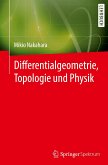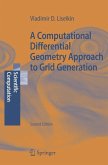Starting from an undergraduate level, this book systematically develops the basics of
- Calculus on manifolds, vector bundles, vector fields and differential forms,
- Lie groups and Lie group actions,
- Linear symplectic algebra and symplectic geometry,
- Hamiltonian systems, symmetries and reduction, integrable systems and Hamilton-Jacobi theory.
The topics listed under the first item are relevant for virtually all areas of mathematical physics. The second and third items constitute the link between abstract calculus and the theory of Hamiltonian systems. The last item provides an introduction to various aspects of this theory, including Morse families, the Maslov class and caustics.
The book guides the reader from elementary differential geometry to advanced topics in the theory of Hamiltonian systems with the aim of making current research literature accessible. The style is that of a mathematical textbook,with full proofs given in the text or as exercises. The material is illustrated by numerous detailed examples, some of which are taken up several times for demonstrating how the methods evolve and interact.
- Calculus on manifolds, vector bundles, vector fields and differential forms,
- Lie groups and Lie group actions,
- Linear symplectic algebra and symplectic geometry,
- Hamiltonian systems, symmetries and reduction, integrable systems and Hamilton-Jacobi theory.
The topics listed under the first item are relevant for virtually all areas of mathematical physics. The second and third items constitute the link between abstract calculus and the theory of Hamiltonian systems. The last item provides an introduction to various aspects of this theory, including Morse families, the Maslov class and caustics.
The book guides the reader from elementary differential geometry to advanced topics in the theory of Hamiltonian systems with the aim of making current research literature accessible. The style is that of a mathematical textbook,with full proofs given in the text or as exercises. The material is illustrated by numerous detailed examples, some of which are taken up several times for demonstrating how the methods evolve and interact.
From the reviews:
"The book is the first of two volumes on differential geometry and mathematical physics. The present volume deals with manifolds, Lie groups, symplectic geometry, Hamiltonian systems and Hamilton-Jacobi theory. ... There are several examples and exercises scattered throughout the book. The presentation of material is well organized and clear. The reading of the book gives real satisfaction and pleasure since it reveals deep interrelations between pure mathematics and theoretical physics." (Tomasz Rybicki, Mathematical Reviews, October, 2013)
"The book is the first of two volumes on differential geometry and mathematical physics. The present volume deals with manifolds, Lie groups, symplectic geometry, Hamiltonian systems and Hamilton-Jacobi theory. ... There are several examples and exercises scattered throughout the book. The presentation of material is well organized and clear. The reading of the book gives real satisfaction and pleasure since it reveals deep interrelations between pure mathematics and theoretical physics." (Tomasz Rybicki, Mathematical Reviews, October, 2013)
"The monograph is based on a very vast literature containing nearly 700 items, from very classical articles and books to very recent ones. The seven appendices are helpful in reading it. There are several examples and exercises scattered throughout the book. ... the book is well organized and clear. The book offers an illuminating and satisfying look at many aspects of modern differential geometry and modern physics and reveals fascinating interactions between pure mathematics and theoretical physics." (Tomasz Rybicki, Mathematical Reviews, January, 2018)
"This volume starts with a crash course in differential geometry in the Cartan dialect, emphasizing differential forms, followed by a monograph in itself concerning the algebraic topology ... of fibre bundles. ... Summing Up: Recommended. Upper-division undergraduates and above; researchers and faculty." (D. V. Feldman, Choice, Vol. 55 (2), October, 2017)
"Part II of Differential Geometry and Mathematical Physics isa very important pedagogical contribution and a worthy complement to Part I. It presents fine scholarship at a high level, presented clearly and thoroughly, and teaches the reader a great deal of hugely important differential geometry as it informs physics (and that covers a titanic proportion of both fields). Additionally, Gerd Rudolph and Matthias Schmidt do a fabulous job presenting physics is a manner that mathematicians will not find unheimlich. Ausgezeichnet." (Michael Berg, MAA Reviews, maa.org, May, 2017)
"This book is the second part of a two-volume series on differential geometry and mathematical physics. ... The book is addressed to scholars and researchers in differential geometry and mathematical physics, as well as to advanced graduate students who have studied the material covered in the first part of the series. The reader will benefit from remarks and examples in the text, and from the substantial number of exercises at the end of each section." (Pascal Philip, zbMATH 1364.53001, 2017)
"This volume starts with a crash course in differential geometry in the Cartan dialect, emphasizing differential forms, followed by a monograph in itself concerning the algebraic topology ... of fibre bundles. ... Summing Up: Recommended. Upper-division undergraduates and above; researchers and faculty." (D. V. Feldman, Choice, Vol. 55 (2), October, 2017)
"Part II of Differential Geometry and Mathematical Physics isa very important pedagogical contribution and a worthy complement to Part I. It presents fine scholarship at a high level, presented clearly and thoroughly, and teaches the reader a great deal of hugely important differential geometry as it informs physics (and that covers a titanic proportion of both fields). Additionally, Gerd Rudolph and Matthias Schmidt do a fabulous job presenting physics is a manner that mathematicians will not find unheimlich. Ausgezeichnet." (Michael Berg, MAA Reviews, maa.org, May, 2017)
"This book is the second part of a two-volume series on differential geometry and mathematical physics. ... The book is addressed to scholars and researchers in differential geometry and mathematical physics, as well as to advanced graduate students who have studied the material covered in the first part of the series. The reader will benefit from remarks and examples in the text, and from the substantial number of exercises at the end of each section." (Pascal Philip, zbMATH 1364.53001, 2017)








